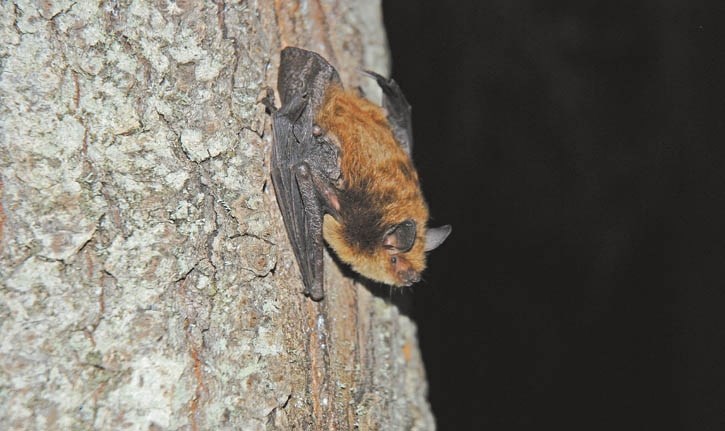Cases of white-nose syndrome, a deadly fungal disease that has been devastating bat populations in North America, have been recorded in Alberta for the first time.
In May, researchers from Wildlife Conservation Society (WCS) Canada and Alberta Environment confirmed the presence of the disease in tissue samples from little brown bats in two sites along the Red Deer River.
“It affects a variety of species, but it especially affects little brown bats and northern myotis, which are two of Alberta's most common bats,” said Cory Olson, program coordinator for the Alberta Community Bat Program with Wildlife Conservation Society Canada.
“(White-nose syndrome) is only just getting into Alberta now, as evidenced by the discovery this year, and we don't entirely know what effect it will have here in the province. If it causes the same impacts as in eastern North America, then we could be looking at a catastrophic die off of our most common bat species.”
Since being introduced to North America in 2006, the fungus that causes white-nose syndrome has spread across the continent and was identified in Alberta in 2022. The fungus is naturally occurring in Europe, though bats appear to have an immunity to it and do not develop white-nose syndrome. With no natural resistance, infected bat populations in Canada and the U.S. have suffered population declines as high as 90 per cent.
It is too early to tell how severely bats in Alberta will be impacted by the disease, Olson said.
Stopping the spread of the fungus that causes white-nose syndrome now would be virtually impossible. Instead, WCS Canada and partners are working to develop a probiotic cocktail that bats could be inoculated with and carry the beneficial microbes back to their hibernation sites.
“The thought is that if they have a greater number of these beneficial microbes, they might be in a better position to fight off this invasive fungus that would otherwise colonize their skin during the winter,” he said.
The inoculation is currently being tested in Washington state, and Olson said they are doing some of the groundwork in Alberta to determine if it would be a viable option in the province.
Bats are top predators of nocturnal insects, and a massive population decline would have profound ecological and economic consequences, Olson said.
“In in the United States, they estimated that bats are worth somewhere around $23 billion to the US agriculture sector alone. We haven't estimated the value of bats in Canada, but they could easily be providing billions of dollars’ worth of ecosystem services that people benefit from. And they're also a substantial portion of the biodiversity we have in Alberta.”
Bats are unique among mammals in that they tend to live long lives. Some species in Alberta have recorded lifespans of up to 39 years, Olson said. Bats are also one of the slowest reproducing animals, with females usually having only one pup per year, making it hard for populations to bounce back from disease outbreaks.
“These are animals that live really long lives, and they reproduce very slowly. So, when they die off, it takes them a long time to recover,” he said.



